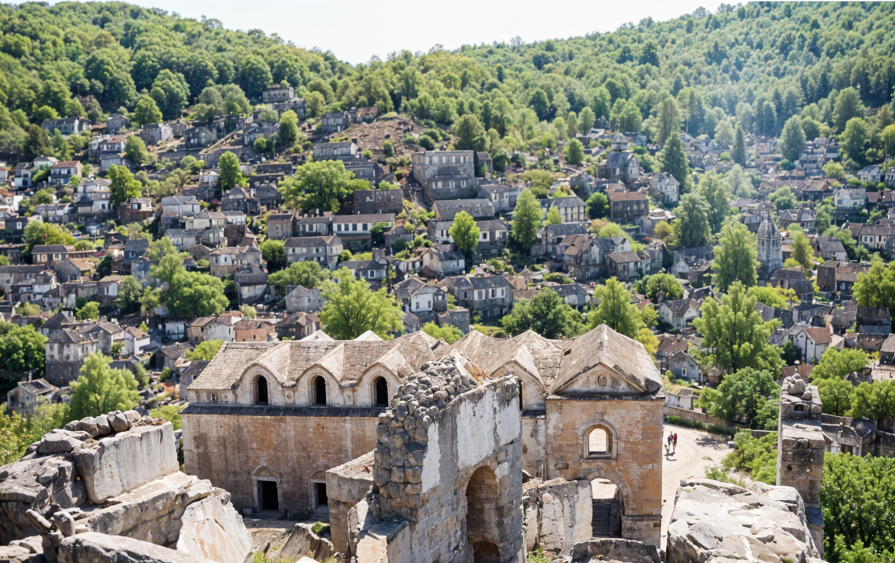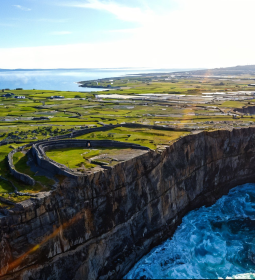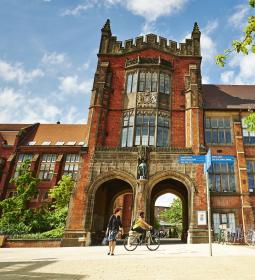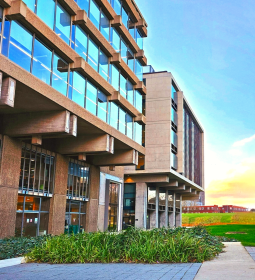There are places on the map that catch not because of what happens in them, but because of what has not happened in them for a long time. As soon as you are there, you catch yourself thinking that time has frozen.
Kayakoy is just one of such cities: empty, overgrown with greenery, but not completely abandoned. It attracts like a magnet and at the same time cools the back. It seems that behind every dilapidated wall there is someone's lost history. Why did he remain unoccupied? What happened to this ghost town?
History of Kayakoy: The City That Fell Silent
Once this city was called Levissi. The Greeks lived here for centuries: they built houses, decorated churches, carved stone, traded, and raised children. Nearby, but a little further away, in the valleys, the Turks settled down: they cultivated the land, did not interfere with their neighbors and seemed to live peacefully with them. Two peoples, two cultures, and one space.
But history often leaves even those who want to live in peace no chance. At the beginning of the 20th century, wars and conflicts broke out, and then, in 1923, Greece and Turkey agreed to conduct a population exchange. This decision turned into a personal tragedy for thousands of people - the Greeks of Levissi were forced to leave their homes. Some left with the hope of returning, some even left the keys to their Muslim neighbors, saying that they might be able to return. But no. No one returned.
Those who replaced them - the Turks from Macedonia - somehow did not immediately get along with this place. The houses are cramped, not spacious, the hills are rocky, there is little water... For people accustomed to fertile plains, life here did not work out. They did not build a new destiny on this empty foundation. So the city was left without new owners.

Time passed, and Kayakey continued to deteriorate. The Greek houses stood, empty and cracked, the people who were still in the area plundered the abandoned houses. Then there was also a strong earthquake in 1957, which finally disturbed the old walls - so Kayakoy turned into ruins.
Why didn't anyone want to come back?
It would seem that this is a ready-made city, take it and live! There are houses, churches, schools - everything is there! But no, it didn't work out. There are several reasons for this.
- Economic. The city was held together by Greek artisans, merchants, those who knew how to survive in this corner, and the settlers had nothing to do with such a way of life. Without markets, workshops and the usual way of life, everything slowly died out.
- An unfortunate place. Yes, it is beautiful. Yes, the view is gorgeous. But how to live here? The land is poor, there is not enough water, agriculture cannot really be established. The Turks, who came here after the exchange, preferred to leave quietly, without trying to conquer the rocky slopes.
- Nature has added to the troubles. After the earthquakes, many houses became dangerous - the walls cracked, the roofs fell. Restoration is expensive and difficult, and when there are so many simpler and cheaper places around, why choose Kayakoy?
Well, one more thing. Locals have a feeling that the city is not just empty: it seems to be saturated with memories, other people's hopes, and longing. Superstition or not - but no one is in a hurry to build a new life here, there is a lot of pain in this place.

What about the authorities? The authorities, it seems, did not really try to change anything. Perhaps it was even deliberate - let Kayakoy remain as it is, as a reminder of the complex history of the two peoples.
Kayakoy today is not a city, but it is not quite a ruin either
Now people come here not to live, but to walk: Kayakoy has become an open-air museum. Tourists wander along the overgrown streets, look into collapsed houses, take photos against the background of gray stone walls. Some people are interested in feeling the atmosphere of the past, while others are just interested in taking spectacular pictures. It costs a penny to enter the city, which makes it popular, especially among curious travelers.
But in recent years, entrepreneurs have also begun to take a closer look at these ruins. From time to time, ideas are heard - whether to turn Kayakoy into a cozy tourist corner with boutique hotels, art spaces and craft shops? After all, you can breathe new life into it, even if it is not quite real.
The idea seems to be beautiful, but here is the question: will it still be the same Kayakey or just a stylized antique décor? Will it lose what makes many hold their breath when they find themselves among its ruins?

A ghost town that has not gone anywhere
It had been a hundred years since the voices had been silenced here. But Kayakoy is standing. Grass breaks through the cracks, sunlight through the holes in the roofs, which seems to be stuck between the past and the present. People come here to feel this strange silence. It seems to decide for itself that it is not yet ready to disappear completely.
Will it be revived again? Maybe, but it will be a different Kayakoy. Maybe with cafes and shops for tourists. Maybe with neat restored houses. But whether its real face will leave in this case is an open question.
In the meantime, it just exists. Without inhabitants. No fuss. Only wind, shadows and stories that no one will tell, but which are still felt here.














